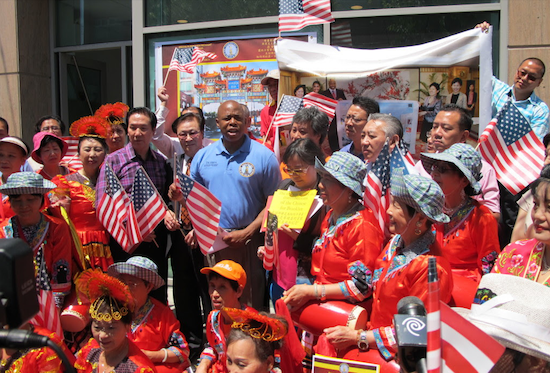Brooklyn’s mixed message to China

Borough President Adams, fresh from a visit to China, is pushing for a "friendship arch" in Sunset Park
“Some people believe that I should not go and visit China, and learn about how we can join the Chinese residents of Brooklyn with the Chinese community,” Borough President Eric Adams trumpeted from Sunset Park’s Eighth Avenue early Sunday afternoon.
“NO WAY!” the crowd yelled.
“People might criticize me, people will attack me, but I’m going to fight to get an archway here in Brooklyn!” Adams added. “You deserve the right to the dignity and respect to have the archway. This is one of the largest growing populations, and you must have the respect you deserve, and I’m going to fight for that respect as your borough President. We will not have two Brooklyns. We will have one Brooklyn. And we will achieve success together!”
